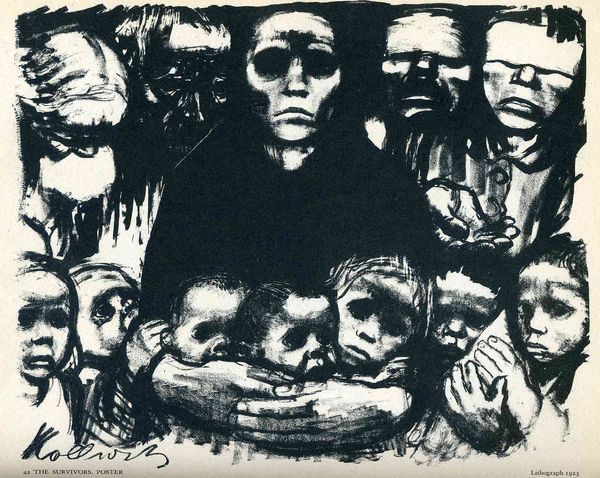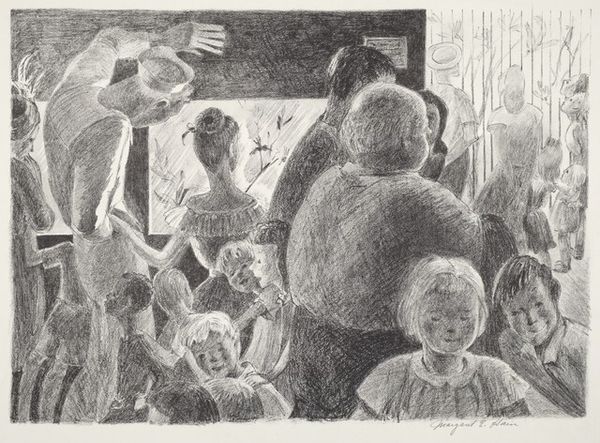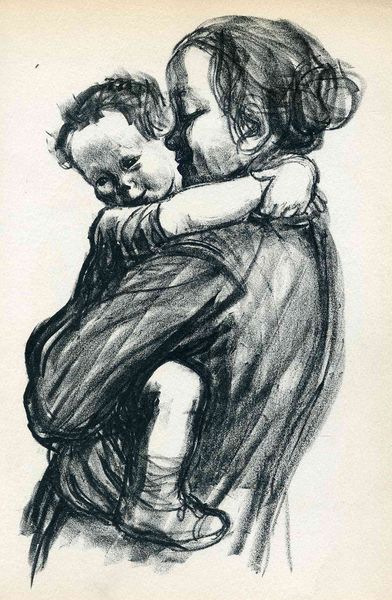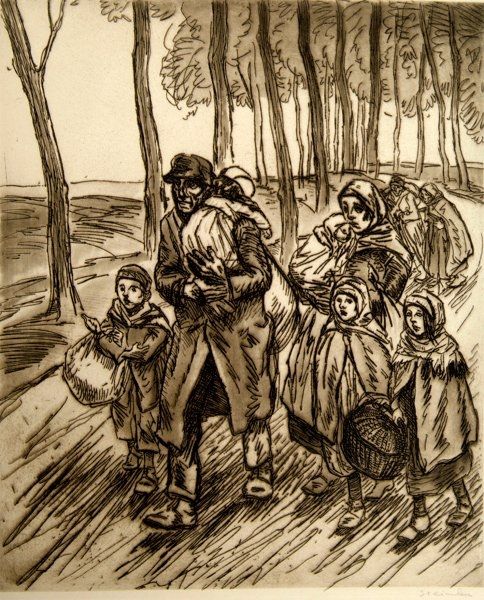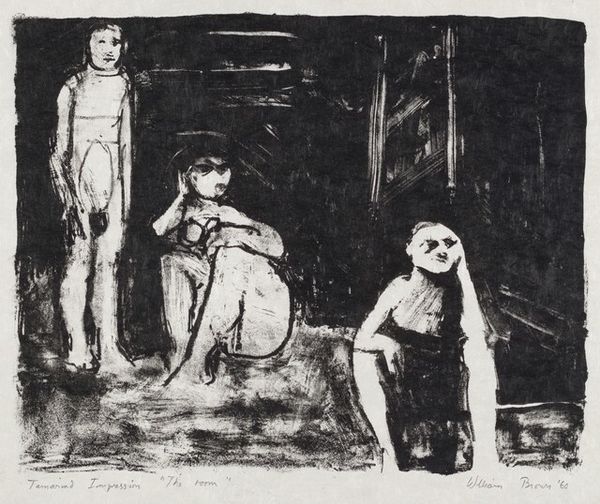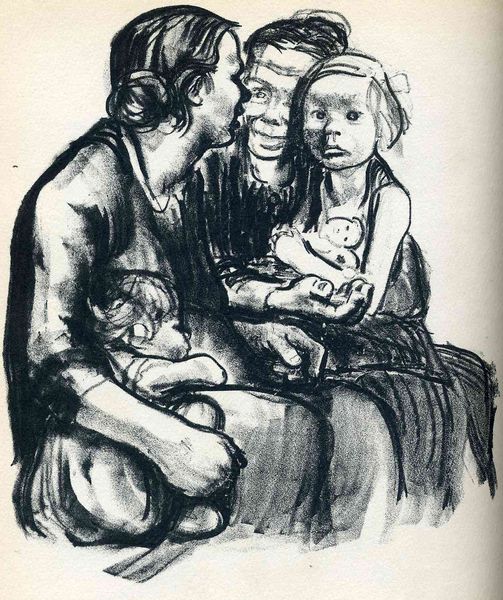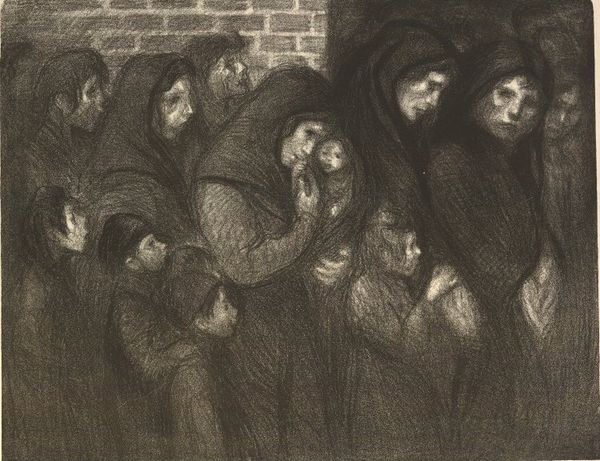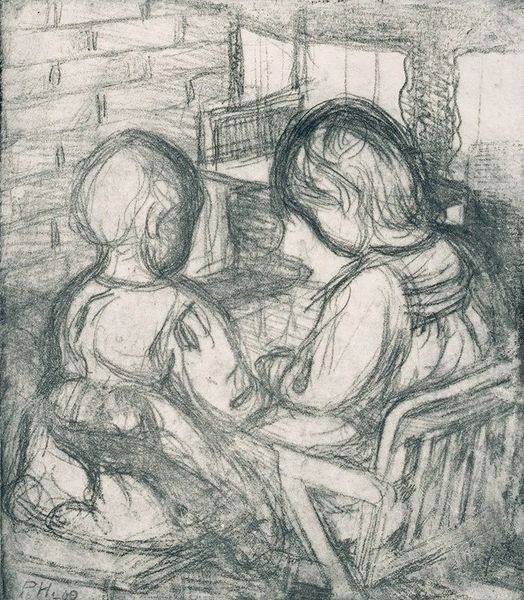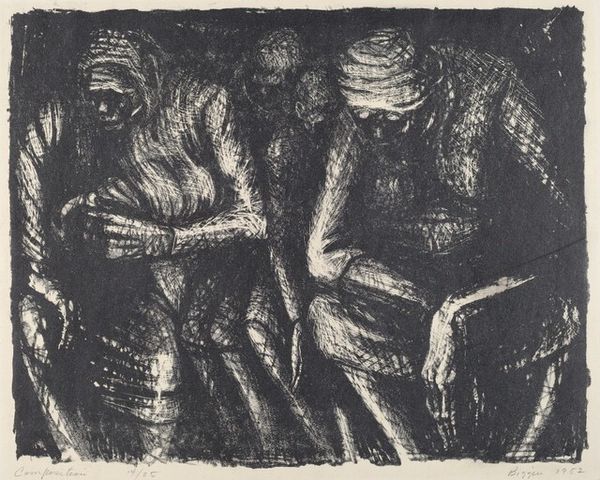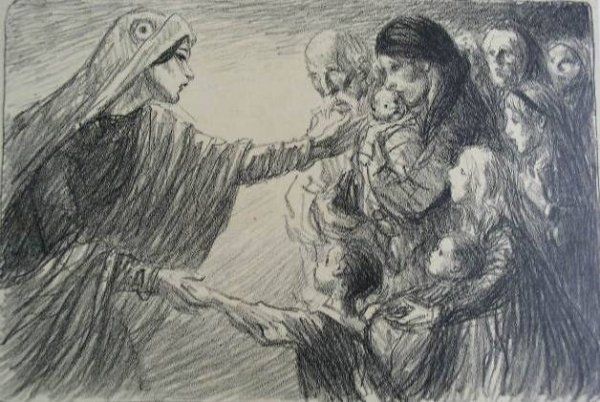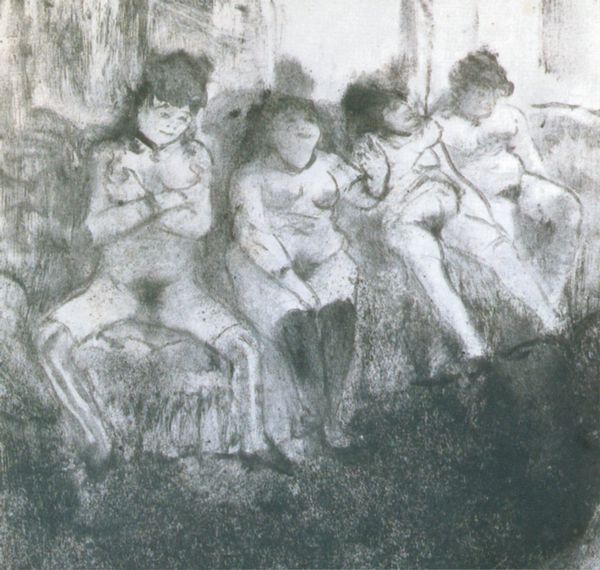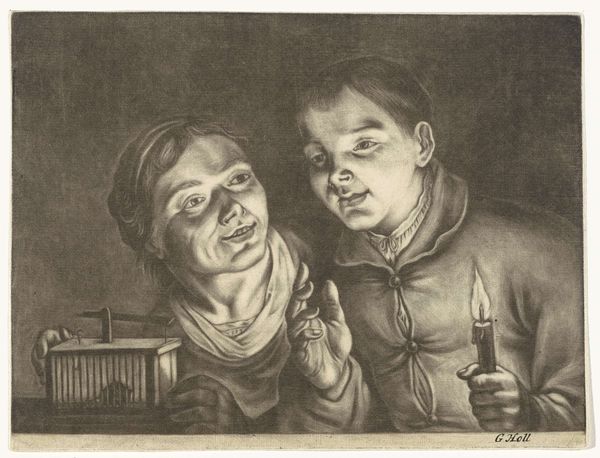
drawing, charcoal
#
portrait
#
pencil drawn
#
drawing
#
charcoal drawing
#
pencil drawing
#
group-portraits
#
expressionism
#
charcoal
Copyright: Public domain
Editor: Here we have Kathe Kollwitz's 1919 charcoal drawing, "The Mothers." The density of the charcoal really conveys a sense of being overwhelmed and closed-in, almost trapped. What strikes you about this work? Curator: What I find compelling is how Kollwitz used accessible materials to represent a segment of society often ignored in traditional art spaces. Look at the sheer volume of charcoal layered here. It speaks to a scarcity of resources, the grit and toil that define these women's lives, and underscores the economic hardships of post-World War I Germany. Editor: So, the very act of using charcoal itself is a statement? Curator: Precisely! It removes the work from the realm of high art, of oil paints and precious metals, and places it firmly in the material world of the working class. Notice how the compressed figures leave very little negative space and how her masterful use of the medium allows the texture of the charcoal to create depth and shadow, alluding to suffering in times of poverty and famine. Editor: That makes me wonder, what do you think she's trying to say about the role of women in that society? Curator: Consider the period: after WWI, there were major shifts in labor structures as women filled essential gaps in society when men went off to war. In her choice of subject and medium, Kollwitz subtly confronts established notions of motherhood. The drawing elevates what was otherwise dismissed as ‘women’s work’ and turns the maternal figure into one worthy of deep consideration and empathy. The production of this work and her subject challenges typical social structures, wouldn't you agree? Editor: Definitely, the use of simple materials makes the artwork very effective. It feels so raw. I hadn't really thought about how that connected with the subjects of her art. Curator: Exactly, it shows how closely linked artistic choices are with social realities and challenges traditional academic expectations around art-making.
Comments
No comments
Be the first to comment and join the conversation on the ultimate creative platform.
